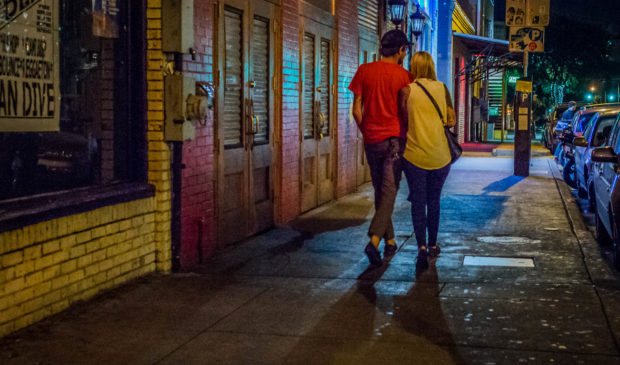ULI panel pushes real estate partnerships to help preserve, create arts spaces
Friday, January 24, 2020 by
Chad Swiatecki With creative businesses and artists all over the city facing displacement issues caused by rising property values, the time is coming for the local real estate and development community to find ways to mix arts and music uses into new mixed-use construction. That was the message Wednesday at the Urban Land Institute’s monthly breakfast series, which looked at how creative culture and the real estate world can coexist.
The panel discussion began with Christine Maguire, manager of the city’s redevelopment division, explaining that rents in the downtown area since 2013 have increased in a J-shaped curve. Those increases put pressure on the cluster of live music venues concentrated in the Red River Cultural District, which is seen by many as the prime example of the economic realities creatives throughout the city are facing.
“It’s a math problem, but for everyone in the room, it’s our problem,” she said. “At some point it’s like the affordable housing conversation, and at some point those businesses do not have the gross margin that increases to match rent in this J-curve economy. A lot of our focus is on preserving what is a big part of Austin’s cultural identity.”
The city is currently looking at the creation of an economic development corporation that has been posited as a potential tool for new land deals for creative businesses. Consultant Matt Kwatinetz said the private sector has to realize the place-setting impacts that creative businesses like music venues, art studios and theaters have on developments.
Pointing to the revitalization of the DUMBO neighborhood in Brooklyn that started with property owners giving free rent to creative businesses, Kwatinetz said the resulting demand from the market soon forced out nearly all the creatives. As a result, rents in the area have flattened and are starting to decrease because of the loss of creative flavor and culture.
“Very often the conversation turns to, ‘Well, who’s going to give something up? And what real estate person is going to take lesser returns to make this happen?’” said Kwatinetz, managing partner of New York-based QBL Real Estate. “That’s absolutely a misunderstanding of what’s going on, and when you think about the rise of local food and local coffee … the people who paid more did that because it was part of their identity.”
Maguire said the city has limited means to incentivize partnerships between private developers and creative businesses and nonprofits, though long-called-for permit expediting and broader land use allowances in the city’s new Land Development Code are two areas with potential.
She said the most important ingredient for those deals is “patient capital” from investors not looking for a maximum return right away and who can see the long-term value that those kinds of tenants bring to an area.
“For all of Austin’s progressivity … we don’t even have a tax abatement policy and other really progressive things,” she said. “City Council understands that to get patient capital to do public-private partnerships and a capital stack that brings money that is patient to fill gaps, that’s a heavy lift of policy. It takes a constituency of everyone who cares, like in the Red River Cultural District, to get a refinement of policy to get the capital that can bake in long-term leases with long-term affordability.”
Framing the issue in business terms, Red River Merchants Association Executive Director Cody Cowan said that many of the city’s economic engines would falter if too much of the nightlife and artistic culture goes away suddenly.
“The ecosystem for music is all intertwined and one piece can’t survive without the others,” he said. “You take South by Southwest, which we can agree has a successful business model and brings lot of capital here and promotes the city like nothing else does, but South by Southwest wouldn’t exist without the Red River Cultural District. We are the professional live music venues operating seven days a week down there … the sort of thing that left Sixth Street decades ago.”
Photo by Bill Oriani made available through a Creative Commons license.
The Austin Monitor’s work is made possible by donations from the community. Though our reporting covers donors from time to time, we are careful to keep business and editorial efforts separate while maintaining transparency. A complete list of donors is available here, and our code of ethics is explained here.
You're a community leader
And we’re honored you look to us for serious, in-depth news. You know a strong community needs local and dedicated watchdog reporting. We’re here for you and that won’t change. Now will you take the powerful next step and support our nonprofit news organization?









